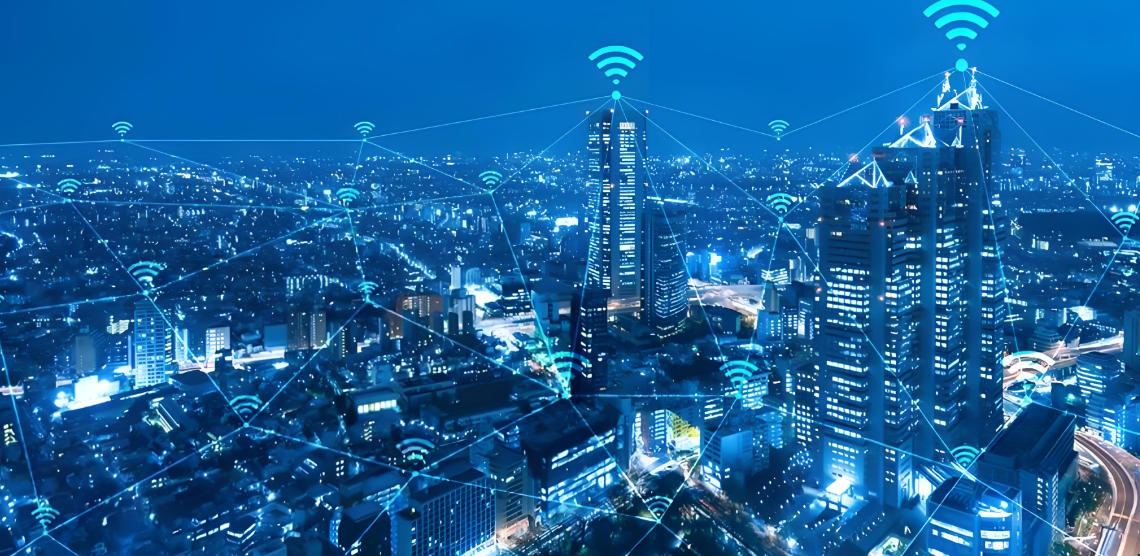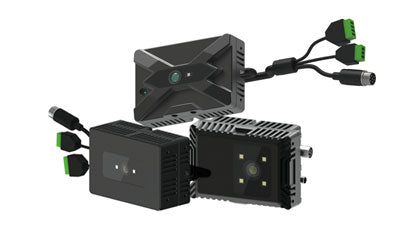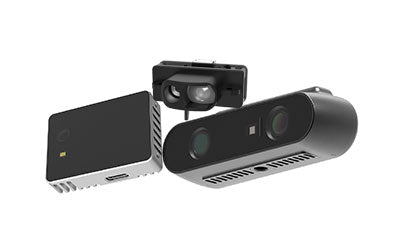TOF Technology for Smart City People Counting: Precision & Monitoring

How can TOF technology achieve high-precision people counting in subway stations, shopping malls, and other public spaces?
With rapid urbanization, managing crowd flow and ensuring safety in public spaces have become essential aspects of smart city development. Traditional people counting methods, such as infrared counters, video analytics, and manual inspections, face clear limitations in accuracy, real-time performance, and adaptability to complex environments. TOF (Time-of-Flight) (https://en.wikipedia.org) technology offers high-precision 3D sensing capabilities, providing new solutions for urban public management, crowd analytics, and safety monitoring.
What is people counting called?
'People counting' refers to the technology used to count the number of people entering or exiting a specific area. This technology is widely applied in retail, transportation, public safety, and building management to optimize resource allocation, improve operational efficiency, and enhance security.
Common People Counting Technologies
-
Infrared Beam Counters: Count people by detecting interruptions in infrared beams.
-
Thermal Imaging Sensors: Identify and count individuals using the heat emitted by the human body.
-
Video Analytics: Analyze camera footage using AI algorithms to detect and count people.
-
TOF (Time-of-Flight) Technology: Emit light pulses and measure the return time to generate 3D depth information, enabling high-precision people counting.
Each technology has advantages and limitations, and the choice depends on the specific requirements of the application scenario.
Application Areas
-
Retail: Evaluate marketing effectiveness, optimize store layout, and allocate staff efficiently.
-
Transportation Management: Monitor crowd flow at stations and airports to optimize transit scheduling.
-
Public Safety: Real-time monitoring in densely populated areas to detect abnormal situations promptly.
-
Building Management: Track occupancy in different areas to optimize energy management and maintenance planning.
Overall, people counting is a versatile technology with multi-domain and multi-scenario applications, and its role in smart city construction is increasingly critical.
Importance and Challenges of Crowd Monitoring
In modern densely populated cities, monitoring crowd flow is crucial for urban management and public safety. Accurate people counting supports public safety, traffic management, commercial operations, and energy-efficient scheduling. However, traditional methods face several challenges and require technological innovation to improve monitoring performance.
1. Insufficient Accuracy
Traditional 2D cameras, infrared counters, or turnstiles are affected by factors such as:
-
Lighting variations: Strong light, shadows, or low-light environments may cause recognition errors.
-
Occlusion and crowding: In dense crowds, overlapping individuals are difficult to distinguish in 2D images.
-
False positives and negatives: Small animals, carts, or temporary obstacles can be miscounted, increasing statistical errors.
Insufficient accuracy affects the reliability of crowd data and may lead to incorrect decisions in traffic management or commercial operations.
2. Low Real-Time Performance
Many traditional counting methods rely on manual inspections, offline video analysis, or periodic data collection:
-
Manual counting is inefficient and cannot cover 24/7 monitoring.
-
Offline analysis requires video replay and annotation, preventing immediate response.
-
Delayed decision-making: In stations, airports, or event venues, managers cannot adjust in real time, increasing safety or congestion risks.
Low real-time performance directly impacts crowd control, safety alerts, and emergency responses.
3. Complex Scenarios
Urban public spaces are diverse and dynamic, challenging traditional monitoring technologies:
-
High-density, dynamic flow: Subway stations, malls, tourist sites, and large events experience rapid fluctuations in crowd volume.
-
3D space coverage needs: Stairs, escalators, mezzanines, and multi-level buildings require depth sensing.
-
Environmental interference: Rain, fog, glare, or low-light conditions can reduce camera effectiveness.
Traditional 2D cameras or infrared devices cannot provide full-coverage, high-precision, all-weather crowd monitoring.
4. Urgent Need for Technological Innovation
Cities and businesses need a technology capable of high-precision, real-time, full-coverage monitoring in complex environments. TOF (Time-of-Flight) sensors meet this need by offering 3D depth sensing and high refresh rates, overcoming limitations caused by lighting, occlusion, and environmental interference. TOF enables:
-
Accurate 3D crowd data, reducing false positives and negatives.
-
Millisecond-level real-time monitoring, supporting instant safety alerts and flow management.
-
Full-scene adaptability, covering indoor, outdoor, multi-level, and complex terrain environments.
With TOF technology, urban managers, transportation authorities, and commercial operators can access reliable crowd data to enable smart scheduling, informed decision-making, and proactive safety management, forming a strong foundation for modern smart cities.
TOF Achieves Precise People Counting
In modern smart cities and large public spaces, precise people counting is central to traffic management, safety alerts, commercial operations, and event scheduling. Traditional 2D cameras or infrared counters often produce errors and delays in dense, complex environments. TOF (Time-of-Flight) technology uses 3D depth sensing to significantly improve counting accuracy and real-time performance.
1. Real-Time 3D Sensing
TOF sensors emit light pulses and measure the return time to generate high-precision 3D point cloud data of people and the environment:
-
Millisecond-level updates: Capture real-time positions, movement trajectories, and flow directions.
-
Multi-scenario adaptability: Stable operation in subway stations, malls, tourist attractions, airport halls, and exhibition centers under all lighting conditions.
-
Flow trend analysis: Continuous 3D data allows calculation of movement speed, dwell time, and direction for informed decision-making.
2. High-Precision Counting
2D monitoring struggles with overlapping individuals in dense crowds, while TOF leverages 3D data to identify individual outlines:
-
Point cloud recognition: Differentiates closely spaced or overlapping people.
-
Multi-layer coverage: Monitors stairs, escalators, mezzanines, and multi-level buildings.
-
Error reduction: Significantly lowers counting errors in high-density environments.
3. Occlusion Handling
TOF captures height and depth data to monitor areas that are partially blocked:
-
Complex passage coverage: Monitors corners, stairways, and underground corridors.
-
Dynamic occlusion adaptation: Reconstructs full contours despite partial occlusions.
-
Supports multi-level spaces: Enables 3D monitoring in subway stations and large event venues.
4. Abnormal Crowd Detection
Beyond basic counting, TOF enables behavior analysis and anomaly detection:
-
Crowd congestion detection: Alerts when density exceeds thresholds.
-
Dwell time monitoring: Identifies prolonged or unusual stoppages.
-
Potential risk prediction: Detects running, pushing, or abnormal movement, triggering preventive actions.
5. AI-Powered Multi-Dimensional Analysis
Combining AI algorithms, TOF systems provide deeper insights beyond counting:
-
Flow trend prediction: Uses historical and real-time data to forecast peak times and congested areas.
-
Flow optimization: Supports traffic signal adjustments, channel management, and crowd guidance.
-
Dwell and behavior analysis: Calculates dwell times, movement speeds, and patterns for commercial or safety decisions.
By integrating TOF technology with AI, smart city managers, commercial operators, and event organizers gain high-precision, real-time, full-coverage people counting capabilities, transforming passive monitoring into proactive management and supporting public safety, traffic management, and business operations with robust data.
Scenario Applications
TOF technology has demonstrated significant effectiveness in various public spaces:
-
Subway Stations: Real-time monitoring of passenger flow during peak hours, with intelligent gate control and public announcements to reduce congestion.
-
Shopping Malls: Analyze crowd distribution across floors and zones to optimize HVAC, lighting, security, and cleaning resource allocation.
-
Tourist Sites and Museums: Real-time visitor counting and early warnings for overcrowding, ensuring visitor safety.
These cases show that TOF-based smart city people counting not only improves management efficiency but also enhances public experience and safety.
Technology Integration and Benefits Analysis
In smart city development, TOF (Time-of-Flight) technology serves not only as a core tool for high-precision people counting but also as a platform for deep integration with IoT devices, big data platforms, and AI analytics systems, enabling city-wide crowd management and optimization. The main benefits include:
1. Data Integration and Panorama Sensing
TOF-generated 3D point cloud data can seamlessly integrate with various urban sensing devices, creating a panoramic people counting network:
-
Multi-source data fusion: Combine TOF data with surveillance cameras, infrared sensors, access control systems, traffic signals, and environmental sensors to achieve unified human-vehicle-space perception.
-
Real-time monitoring with historical comparison: Process both live and historical data to accurately analyze crowd distribution across time and space.
-
Cross-scenario coverage: Cover subway stations, malls, public squares, exhibition centers, schools, and tourist sites, achieving 24/7, full-scenario people monitoring.
2. City Operations Optimization
With AI and big data analytics, TOF systems not only count people but also assist city managers in scientific resource scheduling:
-
Public facility management: Automatically optimize the use of elevators, escalators, passageways, and exits based on real-time crowd density.
-
Security resource allocation: Predict crowd trends and detect abnormal behavior to assign security personnel efficiently, reducing potential safety risks.
-
Event response and crowd guidance: Identify congestion during events or holidays, enabling rapid response and emergency management.
3. Enhancing Public Safety and Risk Prevention
TOF technology combined with AI analytics enables predictive alerts for abnormal crowd density or behavior:
-
Abnormal crowd detection: Trigger alarms or notifications when high-density or unusual behavior occurs.
-
Emergency response: Integrate with smart access control, public address, and alarm systems for rapid intervention, minimizing risks of stampedes or conflicts.
-
Safety visualization: Use 3D heatmaps and trajectory analysis to provide managers with an intuitive overview of safety conditions, improving decision-making speed and accuracy.
4. Decision Support and Data-Driven Management
The fine-grained data generated by TOF systems supports not only real-time management but also scientific decision-making for urban planning and operations:
-
Urban planning optimization: Analyze crowd patterns to support the design of public spaces, transportation routes, and infrastructure planning.
-
Holiday and event management: Predict peak crowd times and congestion points, providing data for event planning, public services, and emergency preparedness.
-
Commercial and resource operations: Help malls, exhibitions, and transit hubs analyze flow, guide traffic, and optimize commercial layouts, improving resource utilization.
5. Integration Benefits Summary
Through deep integration with AI, big data, IoT, and existing management platforms, TOF systems deliver high-precision people counting and intelligent city-wide crowd management:
-
High accuracy: 3D point cloud technology resolves occlusion and overlap, improving counting reliability.
-
Real-time performance: Millisecond-level updates enable instant monitoring and response.
-
Global optimization: Supports coordinated management of resources, public safety, traffic, and commercial operations.
-
Data-driven decisions: Provides quantitative insights for urban planning, event management, and emergency operations.
In summary, the integration of TOF technology enhances urban resource utilization, strengthens public safety, and lays a solid foundation for smart city crowd management and operational optimization.
Future Trends: TOF Smart City People Counting and Intelligent Management
With the development of AI, big data analytics, edge computing, and IoT, TOF-based people counting systems are becoming a cornerstone of smart city management. By combining people counting cameras, people counting software, and other people counting technologies, city managers can achieve high-precision, real-time, and city-wide crowd monitoring.
1. AI + TOF Predictive Crowd Management
TOF technology generates high-precision 3D point cloud data and can integrate with AI algorithms and people counting software for predictive management and intelligent scheduling:
-
Peak crowd prediction: Analyze historical data, event information, and weather factors to forecast peak hours in subway stations, malls, and tourist sites.
-
Congestion alert and dynamic scheduling: Adjust passage access, security patrols, and public resource allocation according to predictions to reduce congestion risks.
-
Behavior trend analysis: Use people counting technology to analyze movement patterns, dwell times, and abnormal behavior, providing actionable insights for city management.
2. City-Wide Smart Sensing Network
TOF sensors can cover all types of public spaces, forming a unified people counting network:
-
Multi-scenario coverage: Deploy people counting cameras in subways, bus stops, malls, tourist sites, streets, and parks for 24/7 monitoring.
-
3D data integration and field-of-view optimization: Apply field of view of a human principles to ensure all areas are monitored, avoiding blind spots.
-
Real-time dynamic analysis: Generate live heatmaps showing crowd density, movement direction, and speed, helping managers optimize traffic flow and safety strategies.
3. Cross-System Integration and Intelligent Linkage
TOF systems can integrate with smart transportation, public safety, and commercial operation platforms for city-wide management:
-
Traffic and safety coordination: Adjust traffic lights, security patrols, and emergency access based on crowd density and abnormal gatherings.
-
Commercial operation optimization: Malls and tourist sites can allocate resources and manage events using insights from people counting software.
-
Intelligent alerts: Abnormal crowd conditions or potential safety issues can automatically trigger alarms for rapid response.
4. Privacy Protection and Compliance
TOF systems use depth information instead of 2D images to achieve anonymous crowd counting:
-
Protect personal privacy: Only capture body contours and movement trajectories without recording faces or identities.
-
Regulatory compliance: Meet GDPR and other privacy regulations, suitable for public spaces, commercial complexes, and campuses.
5. Data-Driven Urban Management and Sustainability
Using person counting data combined with TOF real-time sensing, city managers can:
-
Optimize resource allocation: Smartly schedule elevators, passageways, security, and emergency personnel.
-
Prevent safety incidents: Detect abnormal behavior and predict risks to reduce accidents and congestion.
-
Enable informed decision-making: Support urban planning, holiday scheduling, and event operations with data-driven management.
Summary
TOF-based smart city people counting technology, combined with people counting cameras, people counting software, and other people counting technologies, provides high-precision person counting and full-area real-time monitoring. It enables predictive management, intelligent decision-making, and privacy protection, offering reliable support for public safety, traffic management, commercial operations, and resource scheduling, establishing itself as a core technology for future smart city development.
Synexens 3D Of RGBD ToF Depth Sensor_CS30
Our professional technical team specializing in 3D camera ranging is ready to assist you at any time. Whether you encounter any issues with your TOF camera after purchase or need clarification on TOF technology, feel free to contact us anytime. We are committed to providing high-quality technical after-sales service and user experience, ensuring your peace of mind in both shopping and using our products.






